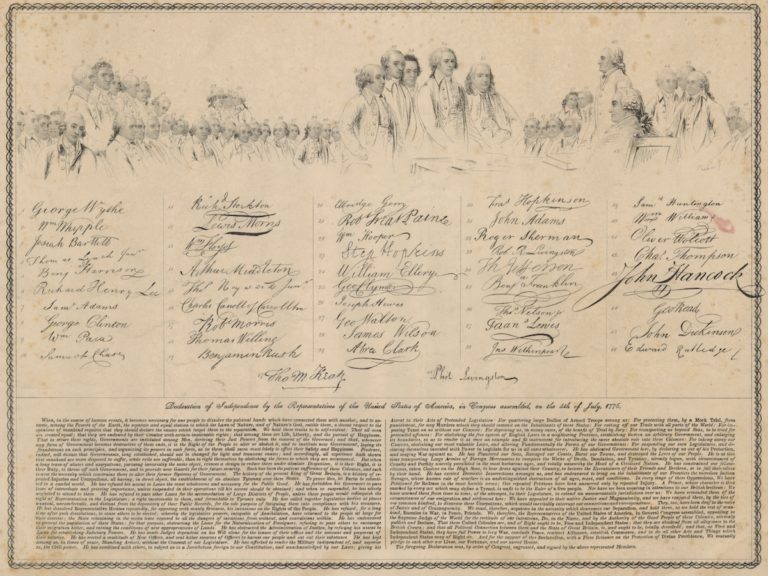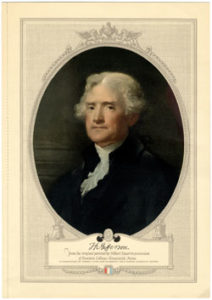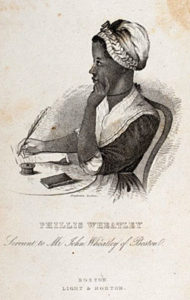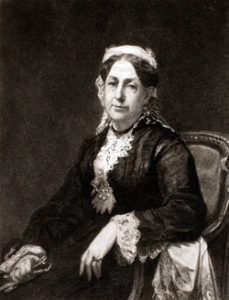Fomenting a Rebellion

Teaching American History in the Clemente Course
Since 2001, I have taught American history in the Boston Clemente Course, a college humanities program accredited by Bard College and offered free of charge to lower income adults through the Codman Square Health Center in Dorchester, Massachusetts. I also teach at Harvard. The driving distance between Harvard Square and Codman Square is less than eight miles, but these neighborhoods can sometimes feel like they’re a world apart. My Clemente students are mostly women and people of color, often from immigrant backgrounds. Many of them have young children and older relatives for whom they are the primary or sole caregivers, which makes it more difficult for them to afford or attend college, especially full time. They shoulder the heavy burdens and myriad manifestations of poverty and prejudice that disproportionately affect people who live in places like Dorchester. Despite all of this, my Clemente and Harvard students have important things in common: they are smart and engaged, they are eager to learn and improve their lives, and they struggle to balance lingering self-doubt with the loftiest of dreams. The Clemente Course is driven by two core ideals: first, that the humanities—the study of history, literature, art, and philosophy—should be accessible to everyone; and second, that the humanities have something to teach all of us, can help us become more critical and compassionate citizens.
Aspirations to equal opportunity, to more enlightened citizenship, and to the common good are part of the core of what it means to be American. Thomas Jefferson’s ambitious and elusive phrase “the unalienable right to life, liberty, and the pursuit of happiness” set in motion Americans’ tenacious belief that tomorrow can and should be better than today, our mythic faith in the possibility of progress. It has inspired our “new births of freedom,” our “new deals” and “new frontiers,” our “great societies” and “mornings in America,” our “bridges to the 21st century,” and our “audacity of hope.” Yet these aspirations—to equality and freedom, to the full rights of citizenship, to a better life—have also functioned as cruel reminders that throughout American history, many people have been denied these things by virtue of their race, gender, sexuality, socioeconomic class, and country of origin. The Declaration’s enduring power—as an act of political dissent and as a piece of protest literature—rests in the fact that more than any of the founding documents, it has inspired future generations of Americans, particularly those who have been marginalized or disenfranchised in some way, to critique the ongoing shortcomings of their society and struggle to create a more just world.
It is for these reasons that I begin my Clemente American History class with the Declaration of Independence. Actually, I begin with two Declarations: Jefferson’s draft and the final version. Jefferson preferred the former, but for various reasons, the Second Continental Congress went with the latter. The vast majority of my students, both at Clemente and Harvard, have never read Jefferson’s draft, another reason why I always insist on teaching it. The most striking change between the two versions comes at the end of a long list of colonial grievances against the “repeated injuries and usurpations” and “absolute tyranny” of the King of England:
“He has waged cruel war against human nature itself violating its most sacred rights of life and liberty in the persons of a distant people who never offended him, captivating & carrying them into slavery in another hemisphere or to incur miserable death in their transportation thither. This piratical warfare, the opprobrium of infidel powers, is the warfare of the Christianking of Great Britain. Determined to keep open a market where Men should be bought & sold, he has prostituted his negative for suppressing every legislative attempt to prohibit or to restrain this execrable commerce: and that this assemblage of horrors might want no fact of distinguished die, he is now exciting those very people to rise in arms among us, and to purchase that liberty of which he has deprived them by murdering the people upon whom he also obtruded them: thus paying off former crimes committed against the Liberties of one people, with crimes which he urges them to commit against the lives of another.”
This entire paragraph from Jefferson’s draft—by far the most sharply worded of the original grievances—was edited out completely. I always read this section aloud, as Jefferson originally intended, so that my students can hear the power and urgency of the language. Their responses are always as diverse as they are: “He sounds angry.” “The language is so violent.” “It seems like Jefferson is working out some issues here.” “How can Jefferson blame the King for slavery when he owned slaves himself?” “No one person was solely responsible for slavery.” “He’s right, slavery was a war crime.” “Who made the decision to remove this paragraph?” What follows is a discussion that never disappoints, one that explores the complex political dynamics of the Revolution, the percolating regional tensions within the colonies, the relationship between Jefferson’s psychology and his rhetorical project, the unsustainable co-existence of slavery and freedom. My students come to understand that the omission of this last grievance in the final version of the Declaration, combined with the absence of any race-specific language or explicit mention of “slavery” in the Constitution, serves as powerful evidence of the Founding Fathers’ personal and political limitations, their inability—and unwillingness—to confront slavery head-on at that historic moment. They erased slavery in word, if not in deed, rendering it all but invisible to readers of the founding documents who did not have access to their behind-the-scenes political wrangling as they were writing the nation into existence. At first, my students seem startled by this revelation, but it begins to make sense to them as they reflect more deeply on the fact that subsequent generations of Americans, including our own, have had similar difficulties squaring the nation’s loftiest professions of freedom and equality with the pernicious legacy of the “peculiar institution.” As one of my Clemente students once said in class: “Slavery was America’s original sin, but we’re all still paying for it.”
No one understood these things more deeply—or experienced them more directly—than enslaved people themselves. When the Declaration of Independence was signed in the summer of 1776, slavery existed in some form in all thirteen colonies, where people of African descent, most of them enslaved, constituted roughly one-fifth of the total population. In the northern states, where the Revolution set in motion a decades-long process of gradual abolition, African Americans began to organize and speak out against both slavery and racial discrimination. Among the most compelling documents from this period are the surviving petitions that enslaved people submitted to colonial (and then state) legislatures to gain their freedom. In the Clemente Course, I teach two such petitions from Boston—the first submitted on January 6, 1773, by an individual (“Felix”), and the second submitted on April 20, 1773, by a group (“Peter Bestes, Sambo Freeman, Felix Holbrook, and Chester Joie”). Enslaved individuals began petitioning local governments for their freedom, sometimes successfully, long before the Revolution, but prior to the 1770s, petitions for black freedom were usually written by one’s master or master’s minister, and framed as moral rather than political appeals, highlighting good behavior or religious piety as justifications for freedom. As the Revolution unfolded, and as enslaved people began to acquire the literacy necessary to write their own petitions, their appeals increasingly displayed the kind of political rhetoric that was common in other, white-authored documents from the period, as well as a growing awareness of the spirit of rebellion that was sweeping the colonies. The petitions from 1773 represent this shift. Inspired by the Revolution’s promise, African Americans began using the printed petition to express their own grievances, giving enslaved people, both individuals and groups, their first public forum to assert their rights to freedom and equal citizenship on their own terms. Taken together, they represent the first and largest expressions of black political agency in the face of white political supremacy in the early history of America.
My students are fascinated by these documents, and more than a few are surprised that they exist at all. As a group, they are drawn, among other things, to questions about authorship (were they written by an individual or group?), literacy (were they written by or on behalf of enslaved people?), regional variation (was it possible for enslaved people to petition southern governments, or just northern ones?), and tone (why are some more deferential and others more defiant?). Building on their reading of the Declaration and its draft, they begin to see more clearly the political implications of rhetorical choices, and the power of language itself: the strategic use of pronouns (I, you, we, us, them); the careful ways petitioners navigated between sacred and secular appeals; and the explicit invocation of “natural rights,” as well as “liberty,” “tyranny,” “equality,” and “independence.” And then they read back from these documents to the Declaration, understanding that all of them are petitions of grievance and acts of protest against existing—and unacceptable—government practices.
One of the most thrilling moments of my Clemente teaching experience occurred early on in my tenure, during the first year of Mitt Romney’s term as governor of Massachusetts. The students came to class the week after we had been reading these and other documents from the American Revolution, including excerpts from Thomas Paine’s 1776 pamphlet, Common Sense. The students were all fired up about some of the governor’s proposed budget cuts to public education and social services, cuts that were certain to negatively affect their lives and livelihoods. There was a town hall meeting that night, at the Great Hall, across the street from our classroom in the Codman Square Health Center. They were clamoring to attend. One student—clearly designated by her classmates to be their spokeswoman—said to me: “Professor Tim, you’ve been teaching us all about revolution, about the right to petition your government when you have grievances. We, the people, have grievances. Can we go?” I pointed out the irony inherent in their asking my permission to protest: What would Jefferson, or Felix, do? They all laughed and then left for the town hall meeting together. Afterwards, we returned to class to discuss how our actions that night, right here in Boston, were related to the Revolutionary history we’d been studying. At that point the students began brainstorming other ways to make their voices heard. They had learned a lesson about citizenship that went far beyond my initial plans or intentions.
For some students, the most powerful historical documents are those that are more individual or private in nature. In addition to very public texts like the Declaration of Independence and Constitution, slave petitions for freedom and pamphlets like Common Sense, we also study the poetry of Phillis Wheatley and letters from Abigail Adams to her husband, John. In 1773, Wheatley made history as the first person of African descent to write and publish a book in English, Poems on Various Subjects, Religious and Moral, making her, as Henry Louis Gates Jr. has argued, the “Founding Mother of African-American literature.” Born in West Africa, Wheatley was brought to the North American colonies at the age of about eight in 1761. That she would complete her first book of poetry at the age of nineteen, while still enslaved, was nothing short of remarkable. But before she could secure its publication, she had to prove to eighteen of “the most respectable Characters in Boston” (all wealthy, white, older men) that she had actually written the poems herself. Wheatley convinced her interrogators, the book was published, and she became something of a celebrity, both in England and America.
In the Clemente Course, we begin our study of Wheatley with her most famous (and also infamous) poem, “On Being Brought from AFRICA to AMERICA”:
‘TWAS mercy brought me from my Pagan land,
Taught my benighted soul to understand
That there’s a God, that there’s a Saviour too:
Once I redemption neither sought nor knew.
Some view our sable race with scornful eye,
“Their colour is a diabolic die.”
Remember, Christians, Negros, black as Cain,
May be refin’d, and join th’ angelic train.
My students always have a wide range of reactions to this poem. The more religious students are drawn to Wheatley’s religious language. Some of the more secular students find it troubling; they reject the implication that one must “find Jesus” to be civilized or worthy of citizenship. We discuss the poem’s voice, as opposed to the poet’s (these are not always the same thing, I tell them, in Wheatley’s poetry or anyone else’s). We debate the extent to which Wheatley was an “apologist” or an “abolitionist” insofar as slavery was concerned, and whether she was making strategic, not just aesthetic, choices in presenting herself, and her art, in this way. Time permitting, I add several other poems to the mix—”On Imagination,” “To the University of Cambridge, in New-England,” “On the Death of the Rev. Mr. George Whitefield, 1770,” and “To His Excellency General Washington”—to get them talking about religious imagery and Classical allusion, Wheatley’s personal and political audacity, and her preferred use of elegy. The class is often divided on a number of issues—whether Wheatley was successfully using the “master’s tools” to dismantle the “master’s house,” whether her poetry was (or wasn’t) “political,” why she seemed to be “obsessed with death,” and “what the deal was with her relationship to powerful white men,” including Whitefield, the British evangelical Methodist minister who was a religious inspiration to her, and Washington, the American Founding Father with whom she shared a mutual admiration.
When I re-introduce Thomas Jefferson—this time as a sharp critic of Wheatley’s poetry—the class dynamic always changes. “Religion indeed has produced a Phyllis Whately,” Jefferson wrote in his 1785 Notes on the State of Virginia, “but it could not produce a poet. The compositions published under her name are beneath the dignity of criticism.” It is here that my students—nearly all of them, regardless of their previous stance on Wheatley—shift from being critics to defenders. They are struck by Jefferson’s “cheap shot” in publishing his derisive comments about Wheatley one year after her death in 1784, and they insist upon recognizing—and respecting—Wheatley’s achievements, given the extraordinary hurdles she had to overcome to be a trailblazing writer, a “first.” “Regardless of whether you love or hate her poetry,” a student once remarked, “Jefferson had no right to disrespect her like that.” As the eighteenth-century debate over Wheatley continues to rage in my twenty-first-century classroom, my students view Jefferson’s critique of Wheatley as something of a racist assault on all black (and female) intellectual and artistic expression, and they rush to the Boston poet’s defense, even as they continue to offer a wide range of critical interpretations of her poetry.
Themes of race, gender, and class are always central touchstones in the Clemente Course. My students bring a mix of sensibilities to the classroom, and their academic work is often refracted through the lens of their own experiences, identities, and backgrounds. To my mind, this is a good thing. Connecting the past to the present, the historical to the personal—and vice versa—is part of living history, not just studying it. How this plays out in any given class is never predictable. Take, for instance, Abigail Adams. When I first began teaching selections from the correspondence between John and Abigail Adams, I did not necessarily expect that my students would relate to them. After all, by any measure, the Adamses were elites—wealthy, educated, powerful—who were far removed from the world of ordinary people, then and now. But there is something about Abigail Adams’ spirit—the way she expressed her affection for, challenge to, and disagreement with her husband—that strikes a chord with many of my students. When we read aloud lines like “I wish you would ever write me a Letter half as long as I write you” or “Remember all Men would be tyrants if they could,” the room always erupts in laughter, head-nods, knowing glances, vocal affirmations—and not a little squirming and grumbling from some of my male students! In addition to her willingness, as one student expressed it, “to put her husband on notice,” the group is also struck by the dynamic between Abigail and John: “They clearly love each other.” “He sees her as an equal.” “She feels comfortable challenging him.” “All things considered, this seems like a pretty good marriage.” This opens the door for a discussion about the history of marriage, about gender and class and race dynamics in the late eighteenth century, about letter-writing as a more private space where women might have had more freedom, or power, to express themselves. In the end, my students are most surprised by Abigail Adams’ political audacity: her bold exhortations to “Remember the Ladies” and “not put such unlimited power into the hands of the Husbands,” as well as her sharp warning that “if particular care and attention is not paid to the Ladies we are determined to foment a Rebellion, and will not hold ourselves bound by any Laws in which we have no voice, or Representation.” To them, Abigail Adams is a revolutionary in her own right—like Phillis Wheatley, a Founding Mother, both determined to work within and against the various constraints of their society to express themselves forcefully and more freely.
If one thing has become abundantly clear to me teaching in the Clemente Course all these years, it’s that students will fall in love with American history if they can see themselves, something they recognize, in the historical record. This was the animating impulse behind multicultural social history—that women and workers, racial and sexual minorities, outliers and ordinary people have made history, and continue to do so. This does not mean that we always, or only, find kindred spirits in the lives of people who are just like us—as my students’ reactions to Phillis Wheatley and Abigail Adams demonstrate—but it does mean that if we teach and write history to include the broadest possible spectrum of humanity, we have a better chance of discovering commonalities in the human experience that can inspire new modes of empathy, understanding, and connection across the ages. We will never be able to have everything in common with those who lived in other times, but in knowing more fully what they were up against, how they responded to their worlds, we may gain a deeper understanding of how to live and act in our own.
This indispensable lesson was confirmed for me again last fall, when I attended the annual gala dinner for Mass Humanities, a non-profit organization that supports public humanities work, including the Clemente Course, across the Commonwealth. David Tebaldi, its executive director, asked one of our recent graduates to speak at the dinner. Ieshia had excelled in the Clemente Course and had recently been accepted to Boston University’s Metropolitan College to continue her undergraduate studies. In the middle of her speech, Ieshia turned to address me directly from the podium, as if only the two of us were in the room. “Professor Tim,” she said, “I don’t think you know how much it meant to me, and to so many of my classmates, that you began your course with Abigail Adams and Phillis Wheatley.” She went on to tell me about how inspired she had been to learn about women who wrote poetry, challenged their husbands and masters, and engaged with the major political issues of the day, despite the fact that they were living at a time in American history when they enjoyed neither rights nor liberty, to say nothing of equality. “They did more than foment a rebellion,” Ieshia concluded, quoting Adams’s words. “They helped us find our voice.” At the end of her remarks, my husband, an educator himself, turned to me and said, “That’s why you teach.”
Indeed it is.
Further Reading
On the Declaration of Independence, see Danielle Allen, Our Declaration: A Reading of the Declaration of Independence in Defense of Equality (New York, 2014); Jay Fliegelman, Declaring Independence: Jefferson, Natural Language, and the Culture of Performance (Stanford, 1993); Pauline Maier, American Scripture: How America Declared Its Independence from Britain (New York, 1997), and Garry Wills, Inventing America: Jefferson’s Declaration of Independence (New York, 1978).
For examples of slaves’ petitions for freedom, see Herbert Aptheker, ed., A Documentary History of the Negro People in the United States, Volume 1: From Colonial Times to the Civil War (New York, 1990) and Timothy Patrick McCarthy and John McMillian, eds., The Radical Reader: A Documentary Anthology of the American Radical Tradition (New York, 2003). See also James and Lois Horton, In Hope of Liberty: Culture, Community, and Protest Among Northern Free Blacks (New York, 1997).
Phillis Wheatley’s writings are collected in Vincent Carretta, ed., Phillis Wheatley: Complete Writings (New York, 2001). See also Vincent Carretta, Phillis Wheatley: Biography of a Genius in Bondage (Athens, Ga., 2011) and Henry Louis Gates Jr., The Trials of Phillis Wheatley: America’s First Black Poet and Her Encounters with the Founding Fathers (New York, 2003). Abigail Adams’s letters are collected in Frank Shuffelton, ed., The Letters of John and Abigail Adams (New York, 2003). See also Woody Holton, Abigail Adams (New York, 2010) and Linda K. Kerber, Women of the Republic: Intellect and Ideology in Revolutionary America (Chapel Hill, 1980).
This article originally appeared in issue 15.1 (Fall, 2014).
Timothy Patrick McCarthy, PhD, is the Stanley Paterson Professor of American History and former academic director of the Boston Clemente Course. He also teaches in the History and Literature program and at the John F. Kennedy School of Government at Harvard. He is the author or editor of five books on history, politics, and social movements in the United States, all published by the New Press.


